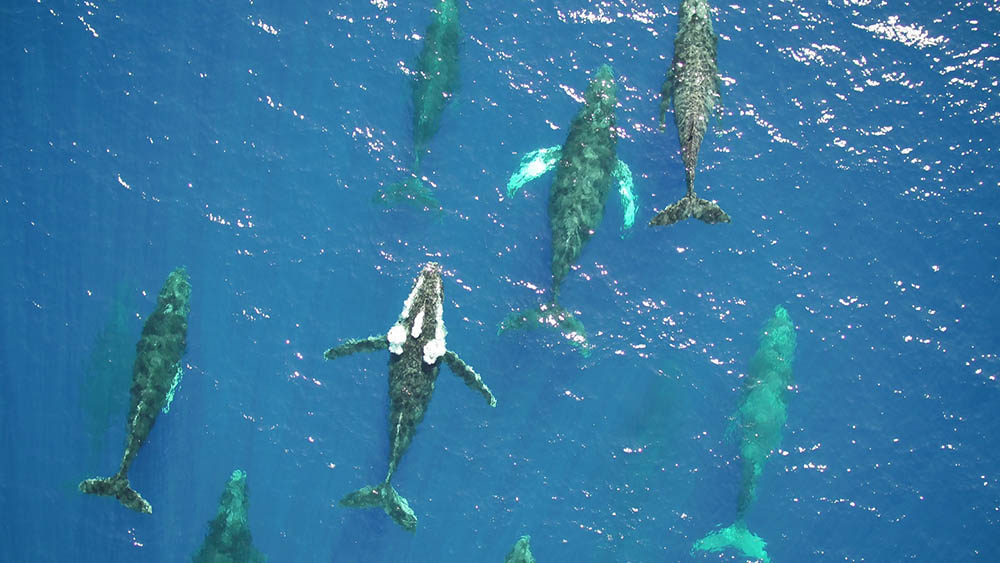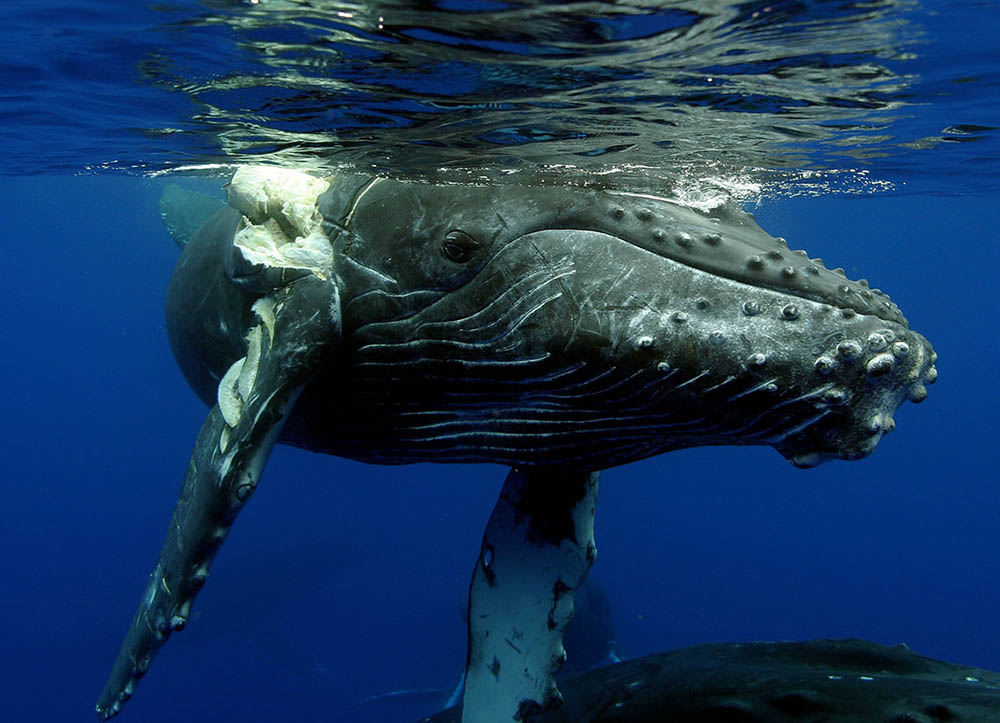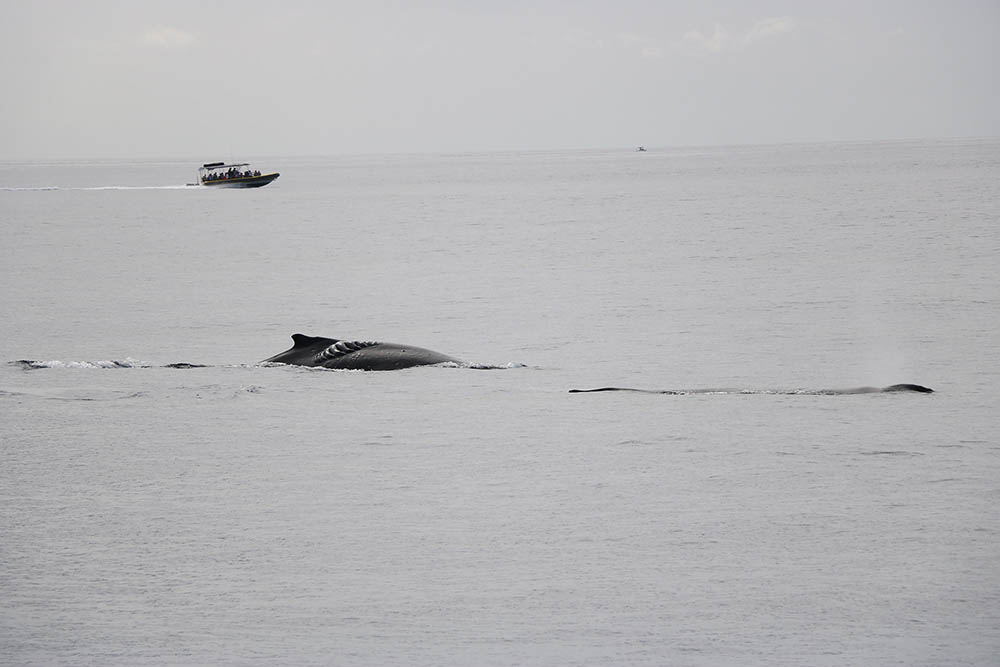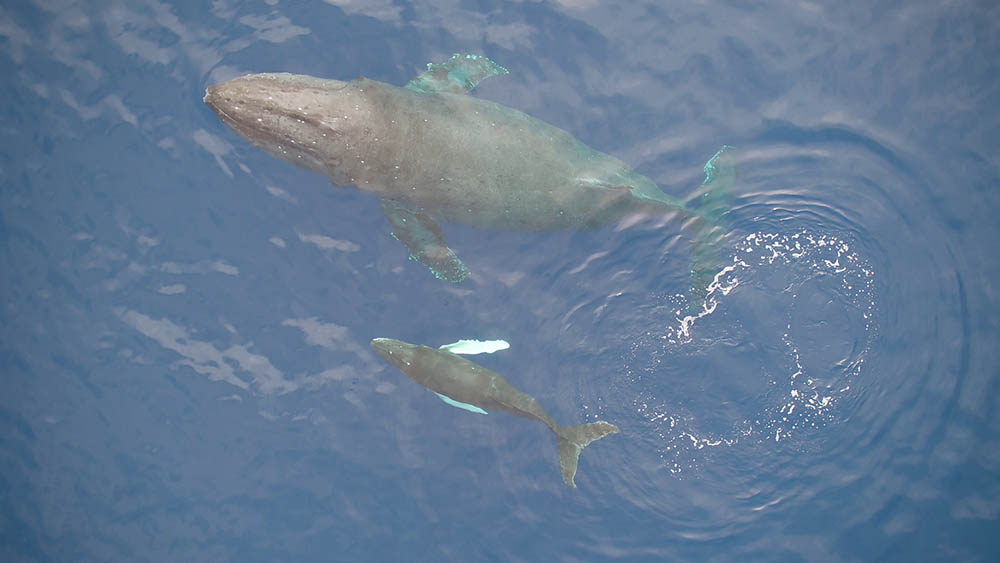2/18/25 – Boating with Humpback Whales

Image taken under NOAA Fisheries Research Permit 21321
The Koholā are here!
It’s peak humpback whale season here in Hawai‘i, when up to 12,000 whales come to breed, calve, and nurse their young in our warm tropical waters.
The Division of Aquatic Resources (DAR) has been working on the cooperative project “Go Slow Whales Below” with the Division of Boating and Ocean Recreation (DOBOR), NOAA’s Hawaiian Islands Humpback Whale National Marine Sanctuary, and Pacific Whale Foundation.
The goal of the project is to protect whales and mariners by reducing boat speeds in whale habitat (down to 600 feet depth) during whale season (November through April).

Whale showing injury from impact with vessel propeller – Image taken under NOAA Fisheries Marine Mammal Health and Stranding Response Program Permit (#932-1489)
Here are some safe boating practices to help protect you and our humpback whales while you are sharing our oceans:
“Go Slow Whales Below” speed recommendations
- Travel below 15 knots (or minimal planing speed), during whale season, within water 100 fathoms (600 ft) deep or less, where there are more whales.
- When traveling at night, reduce your speed even further since it is harder to see a whale after dark.
- When approaching and departing whales within 400 yards, reduce vessel speed to 6 knots.
Keep your distance – it’s the law!
- Do not approach any whale closer than 100 yards (90 m).
- Do not leapfrog, in other words, if you see a whale traveling, you are not allowed to intentionally enter its path so that it approaches you.

Photo: Laura Herriott, Pacific Whale Foundation
Stay alert
- Post a designated observer/lookout while underway to help spot whales.
- Look ahead for “blows” (the animal’s exhalation), the backs of whales, flukes (tails), etc.
- Keep your hands on the wheel and throttle at all times, and be ready to take action immediately to avoid a whale in your path.
Don’t assume the whales can see you
- Whales may not be able to see you, or get out of your way.
- Calves are especially vulnerable since they are curious and may not have learned to be cautious of vessels.

Image taken under NOAA Fisheries Research Permit 21321
Stop immediately if a whale approaches your boat
- Stop immediately if a whale approaches your boat.
- Leave engines running and in neutral until the whale moves away.
Go around whales from behind
- If you encounter whales in your path, go behind them while maintaining more than 100 yards distance.
- Do not attempt to get in front of whales to get past them.
Please kōkua
- Warn other vessels: If you spot a whale, use the appropriate VHF radio protocol or other means to alert other vessels that may not be aware of whales in their path.
- If you are involved in a collision, or see an injured or entangled whale, please call the NOAA Marine Wildlife Hotline: (888) 256-9840. Or, hail the U.S. Coast Guard on VHF channel 16.
Devon Stapleton, DAR Protected Species Program
Images authorized under NOAA Fisheries Marine Mammal Health and Stranding Response Program Permit (#932-1489) unless otherwise noted.
